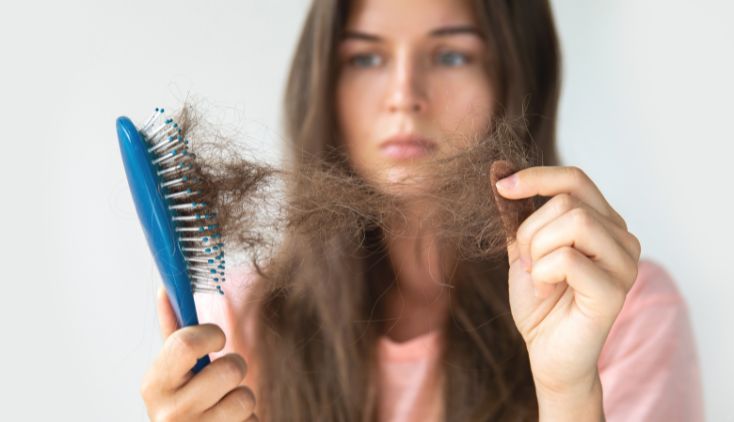Medications and Procedures Explained
Alopecia, or hair loss, is a condition that affects many adults. It can lead to thinning hair, bald spots or overall hair loss on the scalp. Many treatments, like Litfulo, are available to help slow down or even reverse this process. Read on for information on ten proven treatments for alopecia hair loss.
1. Litfulo
Litfulo (ritlecitinib) is a medicine used to help people with severe alopecia areata. It comes in a capsule that is taken once each day. Litfulo works by blocking certain proteins, called kinases, that cause inflammation and hurt hair follicles. By stopping these proteins, it helps reduce the number of inflammatory cells attacking the hair, allowing hair to grow back. Litfulo is part of a group of drugs known as kinase inhibitors.
2. Propecia
Propecia (finasteride) is widely known as a medication mainly used for male pattern baldness. This pill works by stopping the production of a hormone thought to cause hair loss. Propecia has been shown to slow hair loss in many patients and even encourage new growth. However, it comes with possible side effects, so it is important that anyone considering Propecia talks to a doctor to make sure it is safe for them.
3. Minoxidil
Minoxidil, also known as Rogaine, is an over-the-counter liquid or foam treatment that is applied directly to the scalp. It is suitable for both men and women who are experiencing hair thinning. Minoxidil works by increasing blood flow to the hair follicles, which can help strengthen hair and promote growth. Although results may take several months to appear, many users have seen noticeable improvement in their hair density after using Minoxidil consistently.
4. Corticosteroids
Corticosteroids are medications that help reduce inflammation and the immune system’s activity. These drugs can be applied topically, injected directly into the scalp or taken as pills. Corticosteroids can be beneficial for people with alopecia areata, an autoimmune disease that leads to patchy hair loss. They help calm the immune system so that it stops attacking hair follicles, allowing the hair to regrow in many cases.
5. Topical Immunotherapy
Topical immunotherapy is a treatment mainly used for severe or resistant cases of alopecia areata. In this therapy, a chemical solution is applied to the scalp to trigger a mild allergic reaction. This reaction may help the immune system change its behavior and stop attacking hair follicles. Though the idea may seem unusual, many patients have seen promising results with this treatment when other therapies have not worked.
6. Platelet-Rich Plasma
Platelet-rich plasma (PRP) therapy uses your own blood to help stimulate hair growth. A doctor takes a small blood sample, then spins it in a centrifuge to separate the platelets, which are then injected back into the scalp. Platelets contain growth factors that can help revive weakened hair follicles, potentially leading to thicker and stronger hair. This treatment has become popular because it uses your own cells and has very low risk of allergic reaction or infection.
7. Phototherapy
Phototherapy is a newer treatment option that involves the use of special light therapies or devices designed to stimulate hair follicles. This therapy may help in regulating the biological processes in the scalp to encourage hair regrowth. Many people find that phototherapy can be a helpful, non-invasive option for reducing hair loss.
8. Anthralin
Anthralin is a synthetic drug often used in the treatment of skin conditions such as psoriasis, but it has also been used to treat hair loss, especially in alopecia areata. It is applied to the affected scalp areas and works by altering the immune response around the hair follicle. Anthralin may cause temporary skin irritation, so patients should use it under a doctor’s supervision to help balance the risks and benefits.
9. Laser Therapy
Laser therapy, or low-level laser therapy (LLLT), uses light energy to stimulate hair follicles. There are a variety of devices available, such as laser combs or caps, that can be used at home. The light is believed to increase energy production in the cells of hair follicles, which helps improve overall density and hair growth. Laser therapy is non-invasive and can be a good option for those who want a treatment without medications or injections.
10. Hair Transplant Surgery
Hair transplant surgery is a more permanent and invasive solution for hair loss. In this procedure, hair follicles are taken from a part of the scalp that has healthy hair growth and then transplanted to areas that are thinning or bald. This procedure has advanced with better techniques that make the transplanted hair look natural. Although hair transplant surgery requires time to heal and can be more expensive, it can provide long-lasting results for those who are good candidates.
There are many proven treatments for alopecia hair loss available. By working closely with a healthcare provider, individuals can choose the treatment that best fits their needs and lifestyle.
Keep reading to learn about foods that can help reduce hair loss.
